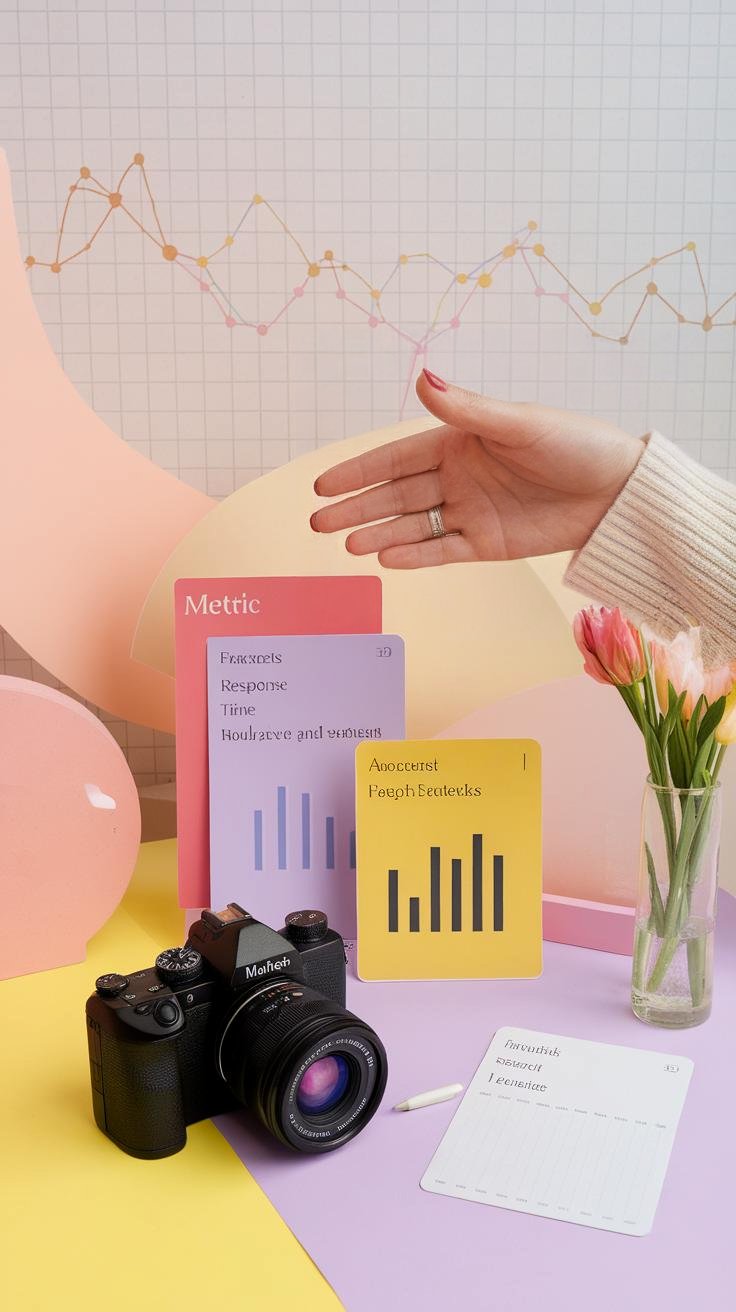Introduction
In today’s fast-paced business environment, leveraging data is crucial for success. Chat data, often overlooked, holds immense potential for driving innovation. As businesses communicate with customers and within teams, valuable insights emerge from these conversations. Organizations can gain a clearer understanding of customer needs and internal dynamics by analyzing these data streams.
Using chat data effectively can lead to improved strategies. Companies can identify trends, enhance customer experience, and foster team collaboration. This article explores how to utilize chat data insights to innovate and stay ahead in the competitive landscape. You’ll learn practical approaches and how to implement them in your business.
Understanding Chat Data Insights
Defining Chat Data and Its Relevance
Chat data refers to the information gathered from conversations between customers and businesses. This data stems from various platforms, such as customer service chats, social media, and feedback forms. It matters because it provides real-time insights into customer needs and preferences. Businesses can track what customers ask, their emotions, and common issues they face.
From chat data, you can extract valuable insights like customer sentiment, frequently asked questions, and product feedback. For instance, if many customers express dissatisfaction about a specific product, you can act quickly to address their concerns. These insights inform decision-making by allowing businesses to fine-tune services, improve products, and enhance customer experiences. What if you could anticipate customer needs before they arise? Harnessing chat data can help you do just that.
Key Metrics to Track in Chat Data
Identifying Important Metrics
Tracking specific metrics in chat data helps businesses make informed decisions. Focus on response time, customer satisfaction, and issue resolution rate. Response time shows how quickly agents handle inquiries. A shorter response time usually leads to happier customers. Customer satisfaction scores, gathered through surveys, reveal how users feel about their experience. Improving this score can boost repeat business. The issue resolution rate indicates how effectively your team solves problems on the first contact. A higher rate can mean lower costs and better customer loyalty.
Focusing on Metrics for Better Outcomes
When you analyze these metrics, ask yourself how they align with your business goals. For example, if your response time is slow, consider training your team or investing in chatbots for quicker replies. Regularly reviewing these metrics keeps your business agile. Small changes can lead to significant improvements. Consider setting benchmarks for each metric to track your progress. If your customer satisfaction drops, investigate the underlying causes. Understanding what drives these numbers can lead to actionable insights that foster growth.
Tools for Analyzing Chat Data
Exploring Analysis Tools
Businesses have several tools at their disposal for analyzing chat data. Each tool offers unique features that cater to different needs. Google Analytics is popular for tracking user interactions. It helps you understand patterns in how users engage with your chat systems. You can set up goals to measure conversation success and identify user drop-off points.
Another useful option is Tableau, which provides powerful data visualization capabilities. This tool allows you to create dashboards that combine chat data with other business metrics. Visual representation helps you identify trends quickly, making decision-making easier. Do you want clearer insights? Tableau could be the solution.
Many companies find sentiment analysis tools like MonkeyLearn valuable. This software helps you analyze customer emotions based on chat interactions. Knowing how customers feel can drive improvements in product or service offerings. Are your customers satisfied? Discovering their sentiments can make a big difference.
Making the Right Choice
When selecting a tool, consider your specific goals. What do you want to achieve with chat data analysis? Look for tools that align with your business objectives. Customer engagement, sentiment tracking, and conversion rates are all vital aspects to explore.
Also, consider ease of use. Tools should be user-friendly so your team can adopt them quickly. You don’t want to waste time training employees on complex software. The right tool can elevate your chat data analysis and drive innovation in your business. Are you ready to harness the power of chat data insights?
Implementing Chat Data Insights in Your Strategy
Step-by-Step Guidance
Start by collecting chat data from all customer interactions. Use tools that log conversations. Gather this data regularly to ensure you have a comprehensive view of customer sentiment. Analyze the data to identify common themes. What questions do customers often ask? What concerns do they express? These insights highlight areas needing improvement or innovation.
Involve your team in the analysis process. Hold workshops to discuss findings. Encourage brainstorming around potential solutions based on chat data. This step fosters a culture of collaboration. Teams feel valued when they contribute to decision-making.
Once your strategies are in place, implement changes gradually. Monitor the impacts on customer interactions. Are customers more satisfied? Do you notice a decrease in repetitive queries? Track these metrics to refine your approach continuously.
Set up regular reviews of chat data insights. Schedule monthly or quarterly check-ins to assess progress. Keep your strategies flexible to adapt based on new data. This process creates a cycle of ongoing improvement. How will you measure success in your organization?
Enhancing Customer Experience Through Insights
Using chat data effectively can transform your customer experience. Start by analyzing customer interactions to identify common questions and concerns. Are there particular issues that frequently arise? Addressing these pain points in real time can prevent frustration. For instance, if many customers ask about returns, consider creating an easily accessible FAQ or chatbot response.
Personalization also plays a vital role. By utilizing chat data, you can tailor experiences based on individual customer histories. If a customer often inquires about specific products, recommend similar items during future chats. This not only shows you value their preferences but also encourages repeat business.
Gather feedback directly in chats. Ask customers specific questions about their experience. Use this information to refine your approach. Are customers satisfied with response times? Is the language in your chats clear? Continuous adjustment based on this feedback helps maintain high satisfaction rates.
Leverage analytics tools to track chat performance metrics. Review average response time, resolution rate, and customer satisfaction scores. Do these metrics align with your goals? Regularly assessing your chat data ensures you meet customer expectations effectively.
Boosting Team Collaboration with Chat Data
Enhancing Teamwork through Chat Insights
Chat data can significantly improve how your team collaborates. You can analyze conversation trends to identify common issues that arise during projects. This analysis helps teams address pain points, leading to smoother workflows. For instance, using tools like Microsoft Teams or Slack allows members to track conversations and revisit ideas without losing critical information.
Consider conducting regular reviews of chat data. These reviews can highlight communication barriers and areas needing improvement. You might find that certain members are not participating, indicating a need for more inclusive discussions. Using this data to fine-tune team interactions makes collaboration more effective and encourages participation from everyone.
Tools for Effective Collaboration
Many collaboration tools offer analytics features. Platforms such as Zoom provide insights into meeting participation and engagement. Using these tools, you can empower your team by ensuring everyone has a voice. How well do you utilize these insights in your meetings? Regularly assess data from your chosen platforms to inform strategic changes that can enhance your team dynamics.
Chat data fosters a culture of openness. When everyone understands what’s discussed, it encourages transparency. This transparency can lead to innovative solutions. By leveraging chat insights effectively, your team can adapt and grow. What steps can you take this week to start using chat data for better collaboration?
RealWorld Case Studies
Customer Service Transformation
A retail company used chat data to enhance its customer service. They analyzed chat transcripts for common issues. By identifying patterns, they improved their FAQ section. This change reduced response times by 30%. Customers reported higher satisfaction. The company also trained staff based on real chat interactions. This led to better product knowledge among employees and improved sales conversions.
Product Development Insights
A tech startup tapped into chat data to guide product features. They collected feedback from users during chat sessions. Insights showed users desired a specific feature. The startup prioritized this in their development roadmap. After launch, user engagement increased by 40%. Tracking chat data helped them continuously refine their offerings, showing how customer input drives innovation.
Challenges in Using Chat Data Insights
Common Challenges
Many businesses struggle to effectively utilize chat data insights. One major challenge is data overload. With a high volume of messages, extracting relevant information becomes difficult. Understanding user behavior also poses challenges. Translated sentiments can be misleading, making it tricky to gauge customer needs. A third challenge relates to technology integration. Companies may have existing systems that do not easily incorporate new chat data tools.
Strategies for Overcoming Obstacles
To tackle data overload, set clear goals. Define what insights you need. Break the data into smaller, manageable pieces. For better understanding of user behavior, use sentiment analysis tools to filter out noise. These tools help capture the essence of customer feedback. To address integration issues, invest in flexible solutions that connect with your current systems. Have you considered cross-training your team to enhance their tech skills? This investment can drive better collaboration and comprehension of chat data analytics.
The Future of Chat Data Insights
Emerging Trends in Chat Data Insights
Looking ahead, chat data insights will continue to evolve. Companies will increasingly rely on them to understand customer behavior. With this deeper understanding, businesses can create more personalized experiences. For example, if a customer frequently asks about a specific product, businesses can send tailored offers directly related to that interest. This kind of targeted approach drives engagement and boosts sales.
Influence of Emerging Technologies
New technologies will shape how businesses utilize chat data. Artificial intelligence will improve data analysis, allowing for real-time insights. Imagine the ability to predict customer needs before they even reach out. Integrating machine learning can enhance chatbots, making them more effective at resolving issues. As advancements continue, how will you ensure your business stays ahead? Focusing on these technologies can enhance your strategies and lead to greater outcomes.
Conclusions
Utilizing chat data insights leads to greater innovation in your business. By deeply analyzing communication patterns and trends, you can create more targeted strategies. This proactive approach will help you understand customer behaviors and preferences. Enhancing communication channels internally can bolster teamwork and productivity.
Drive your organization forward by embracing these insights. The time to leverage chat data is now. Don’t let valuable information slip through the cracks. Act on these findings and transform your business practices to meet the evolving demands of the market.




















